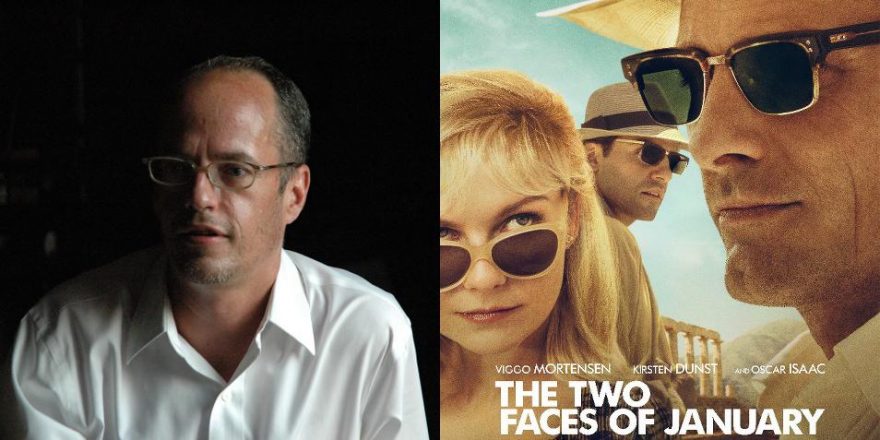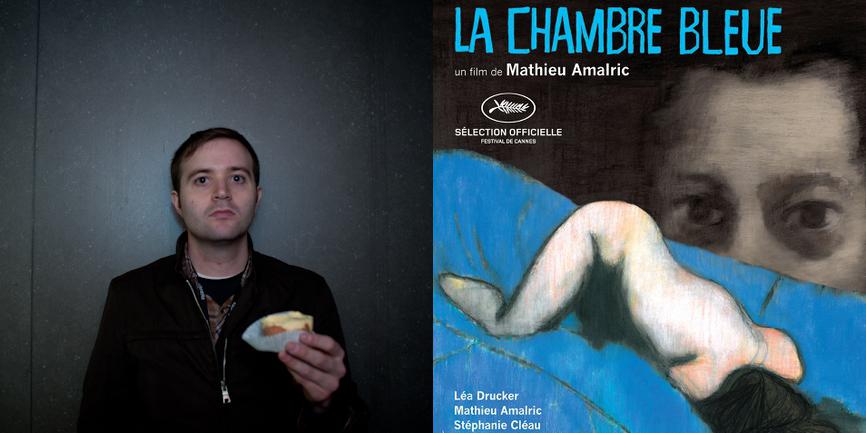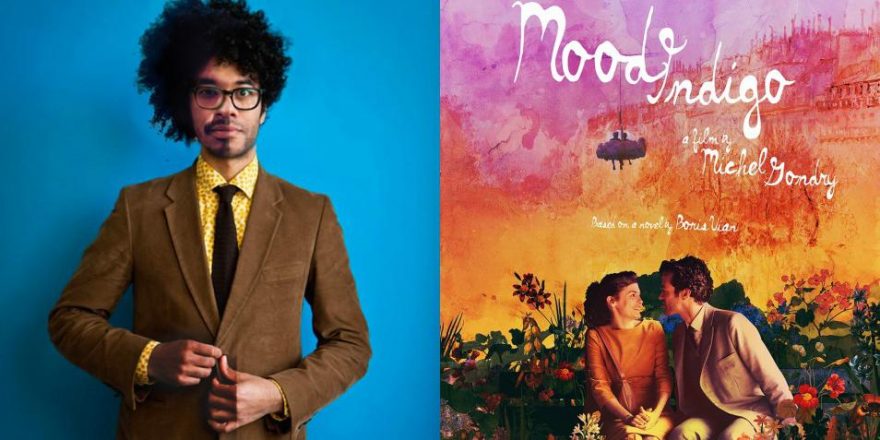“The present and the past coexist, but the past shouldn’t be in flashback.”
— Alain Resnais on his film Hiroshima mon amour
When director Alain Resnais died this past March at 91, he left behind a remarkable body of work that defies expectations and transcends genre. In his final film, Life of Riley, this most stylistically audacious of directors tackles a story about the love of three women for the same man, a story which unexpectedly echoes vintage romantic dramas such as Joseph L. Mankiewicz’s A Letter to Three Wives. But while Mankiewicz used his absent narrator — a woman who has stolen the heart of one of the film’s three husbands — as a device for melodrama and mystery, Resnais’ equally absent George Riley hints at more existential depths.
Resnais’ career opened with a dazzling quartet of features, beginning with his groundbreaking debut Hiroshima mon amour (1959) and spanning Last Year At Marienbad (1961), Muriel (1963) and The War is Over (1966). Prior to these features, Resnais’ early documentary shorts demonstrated a wide-ranging engagement with the world and an increasingly rigorous approach to form. Though Hiroshima is still taught in Introduction to Cinema classes worldwide, its friskier cousins, Jean-Luc Godard’s Breathless, Jacques Demy’s Lola or Agnès Varda’s meditation on the flight of time, Cleo From 5 to 7, have, for many viewers, aged better, and seem more “immediate” or “contemporary.”
Yet Resnais’ singular work indelibly impacted later time-shifting narratives as diverse as Nicolas Roeg’s Don’t Look Now and Steven Soderbergh’s Out of Sight and The Limey. And I can think of no other director who collided politics, character, emotion, fashion and form with the same thorny intensity. With their cool surfaces laminating hotter tensions, these four movies stretch the limits of narrative and, like the work of Resnais’ friend Chris Marker, they expand storytelling into a realm as conceptual as it is psychological (or perhaps more accurately, anti-psychological).
(A disclaimer: in recounting the following anecdotes I want to make clear that I suffer no delusional hubris, and though inspired by Resnais — like many directors before me — I am hardly a master of the form like Roeg or Soderbergh.)
In 1992 when I made my first feature, Swoon, the theatrical landscape was entirely different from today’s, and a tiny independent movie could play in theaters for months. One day, a thick envelope arrived in our production office mail. Watermarked paper. Engraved. Fashion designer Geoffrey Beene had apparently watched Swoon a handful of times in its Lincoln Center run, and (after an initial nerve-wracking meeting, before which I took way too long to decide which of my two jackets to wear) he invited me to make a film commemorating his thirtieth anniversary as a designer. Featuring an ensemble cast including Viveca Lindfors, Marcia Gay Harden, Claire Danes, Adina Porter and Russell Wong, the film was largely inspired by the stark, elegant black-and-white topographies of Marienbad, the inscrutable anti-psychological approach of Alain Robbe-Grillet’s writing and the visionary films, writings and art of Jean Cocteau.
Years later, when screenwriter Howard Rodman and I were working together on Savage Grace, we often turned to Resnais as a window into the energies of the ’60s. We were particularly drawn to The War is Over. More conventional in its narrative than the three films that preceded it, it retains Resnais’ signature boldness in its provocative politics, in his protagonist’s subjective flash-forwards and flashbacks, as well as in the flavorful juxtapositions within his international cast.
In Kent Jones’ excellent piece for Criterion about Hiroshima mon amour, he quotes Resnais’ producer Anatole Dauman, who snubbed the film after an early screening, saying, “I’ve seen all this before, in Citizen Kane, a film which breaks chronology and reverses the flow of time.” To which Resnais quipped, “Yes, but in my film time is shattered.” Take a look at the first three minutes of Muriel, during which Delphine Seyrig’s Hélène contends with a fussy, bourgeois client in her seaside antique shop. The rendering of space and time is positively Cubist in its jagged, multi-angular cuts — a tour de force reworking of the cinematic conventions of parallel action and the compression of time.
So what to make of the conventional chronology, the exaggeratedly “fake” sets, the mannered performance style and the over-abundance of establishing shots (drawn cartoons, no less) in Resnais’ final film, Life of Riley? It all depends on your point of view. This is most definitely, as they say, “not a movie for everyone.”
Resnais here adapted the work of British playwright Alan Ayckbourn for the third time and, true to form, he remained a merry prankster to the very end of his incredible career. A comic, bittersweet tale of love lost and regained, set in Yorkshire, England, but cast entirely with French actors, Life Of Riley is gorgeously absurd. The deft ensemble cast of actors gamely mangle the impossibly English names as they occupy a kind of meta-geographical space that is neither fully England nor fully France. (I was reminded, in a very different way, of Kubrick’s uncanny netherworld in Eyes Wide Shut — streets that hover in the liminal space between New York and Not-New-York.)
Production designer Jacques Saulnier (with whom Resnais worked as far back as Marienbad) transforms a soundstage into a witty series of sets, a kind of modernist/pop fantasia. For me, the look of the film recalled the flatness of color and deceptive sophistication in the paintings of Matisse or Alex Katz. Long, choreographed takes in medium-wide shot are punctuated by brittle, artificial close-ups which resemble the whacky progeny of Roy Lichtenstein — Resnais’ characters silhouetted like comic-book busts against a grid of drawn lines.
With its interlocking layers of artifice and a story that contains a play within a film (in a film that resembles a play), Life of Riley unfolds as a sort of playful meta-narrative, revolving around the shifts of love and loyalty among three couples. In the opening of the film, Kathryn (played by Sabine Azéma, Resnais’ wife and frequent collaborator) and her husband, the doctor Colin (Hippolyte Girardot), discuss one George Riley, who has recently been diagnosed with cancer and is soon to die. Later, to cheer him up, his friends convince Riley to take a role in a play they’re all rehearsing. We never meet Mr. Riley and much of the action of the film concerns characters on screen reacting to actions that occur off screen — actions that we do not see.
It’s a tough movie to describe in words — for one thing, the plot sounds more like melodrama than it actually is. And though at moments I grew impatient with Resnais and his super-arch approach, the film lingered with me, leaving an unusual aftertaste that didn’t easily fade away. Stuck in my throat. Like much of Resnais’ work (and like objects in the mirror when you’re driving), it’s gotten bigger the farther I’ve moved away from it.
You can get a taste of the film’s odd mash-up of gallows humor and witty wordplay in this exchange between Kathryn and Colin as they discuss the fate of the (as yet unnamed) man who has cancer:
Kathryn: If he’s a bus driver, say, it could be dangerous. If he drops dead at the wheel with a bus full of school-children.
Colin: And the bus crashes into a frozen lake.
Kathryn: Precisely.
Colin: I imagine the bus company has insurance for such an eventuality.
Kathryn: You mean the driver is covered?
Colin: Drowned and covered!







